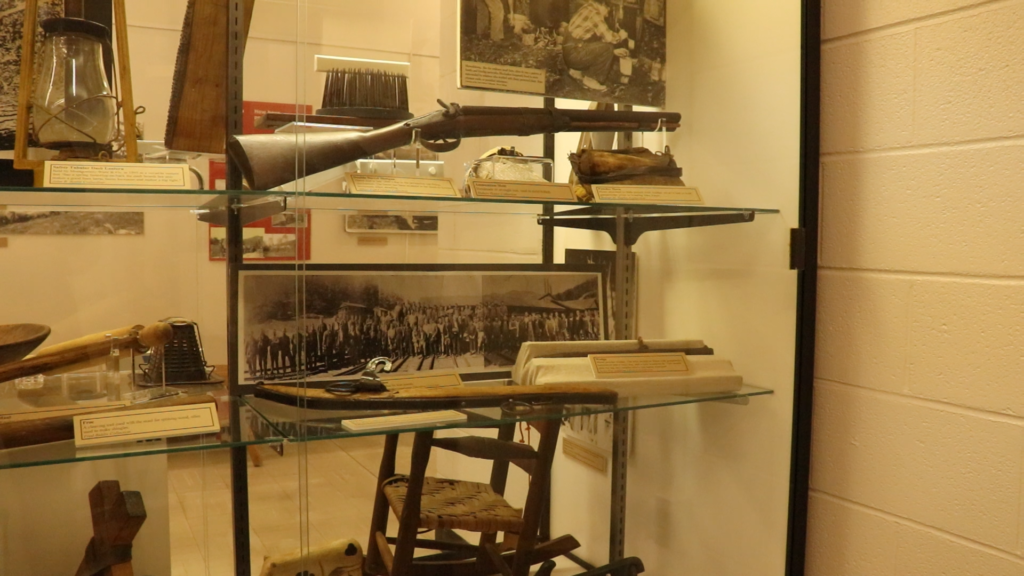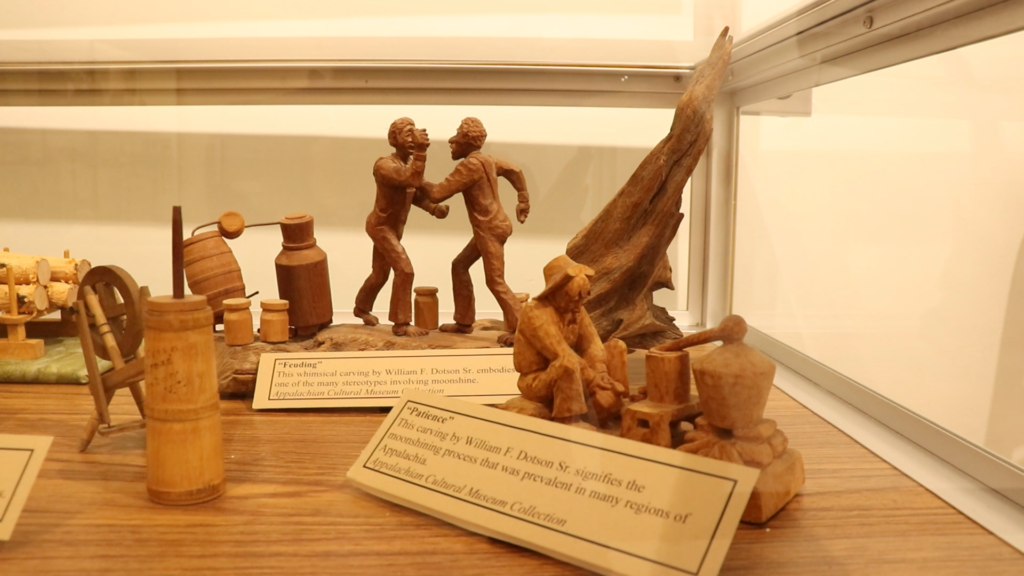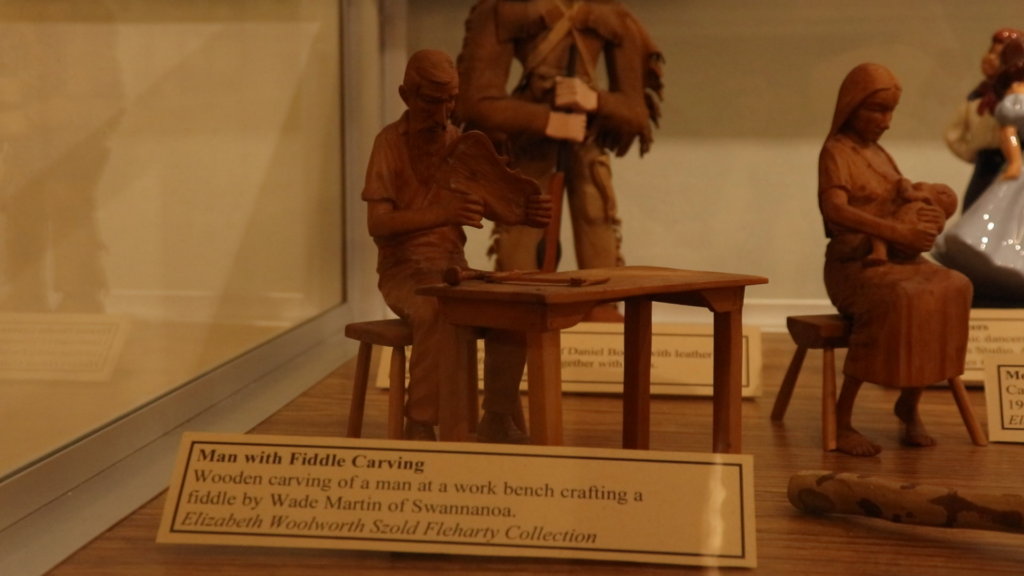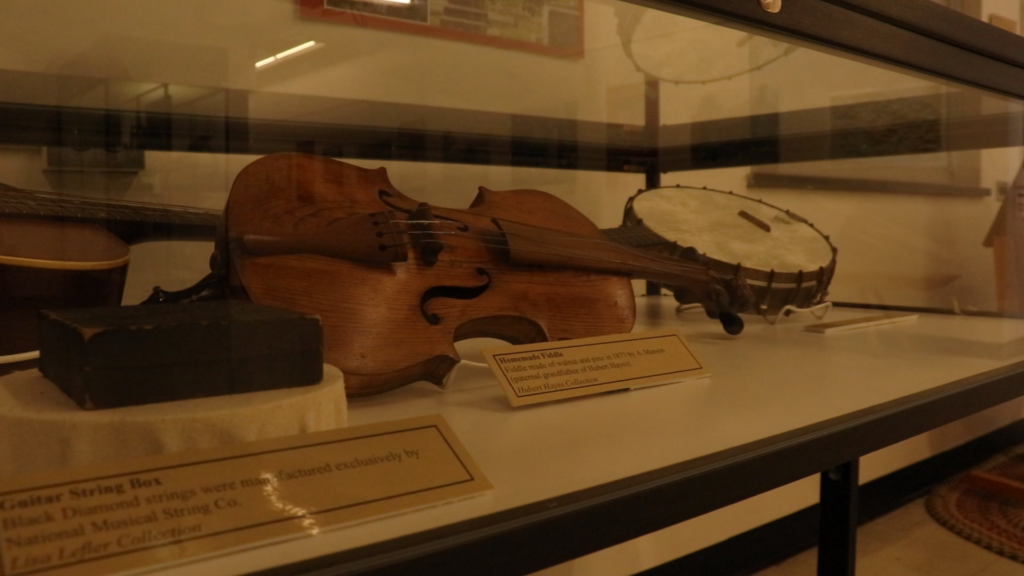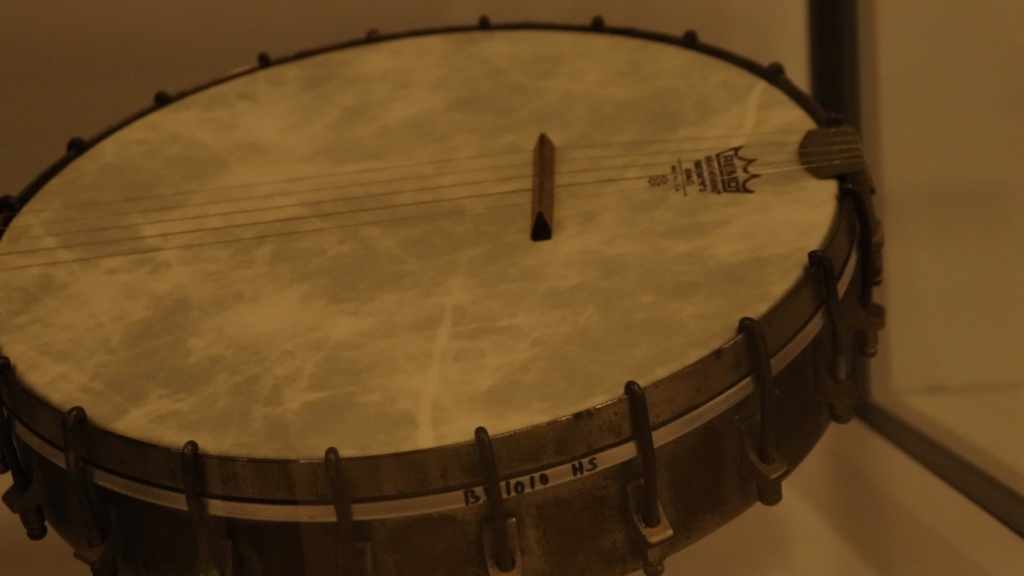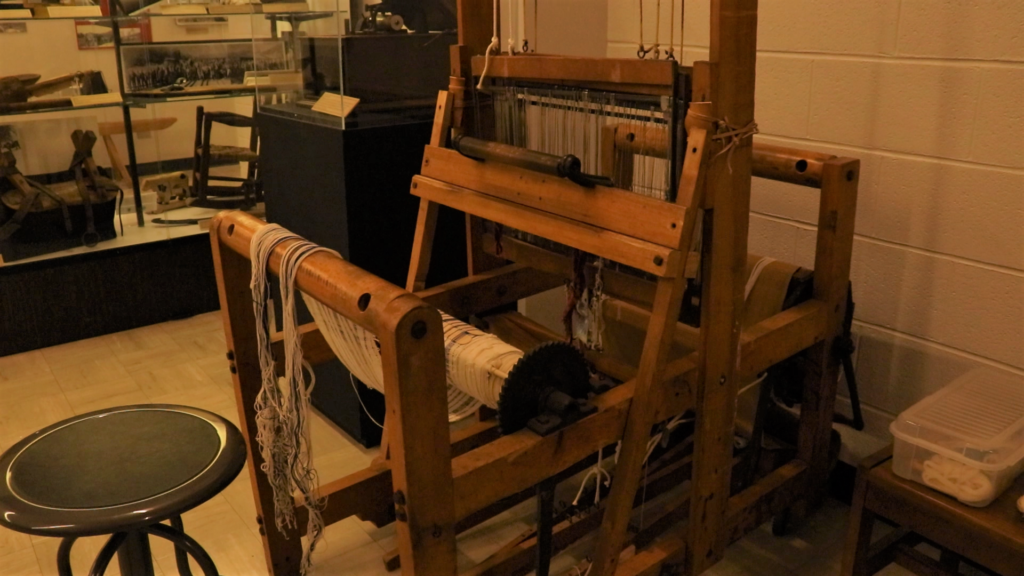Story co-written/produced with Charles Gadie
Walking through the door, visitors are greeted with a smile from the student workers at the front desk and a sense of curiosity. Many wondering ‘what is this hidden place’.
The Mountain Heritage Center is Western Carolina University’s museum of southern Appalachian history and culture.
Currently in their gallery exhibit, the center has a quilt exhibit featuring twenty-one quilts. Each quilt has a story behind it, whether it’s a story on the pattern, the fabric or the maker.
The center has one main room that features different exhibits that the center either hosts or produces themselves.
Peter Koch, the education associate of the Mountain Heritage Center, says they generally have two to four exhibits a year in the center’s main staging area. The exhibits are either created by the center’s staff or rented from artists or other museums.
The center has hosted many rented exhibits in the past. One of those was a gallery of paintings created by Ann Miller Woodford, a western North Carolina native.
Aside from the center’s main room, on the Hunter Library’s second floor, the center displays a permanent exhibit displaying artifacts of southern Appalachian identity. The exhibit is called Discovering Appalachia.
Pam Meister, director of the Mountain Heritage Center thinks this exhibit is important to showcase throughout the year because of its distinct nature to WCU.
“It’s about what makes Southern Appalachia so different and special,” Meister said.
The Discovering Appalachia exhibit displays artifacts dating back to the 1800s. The exhibit features an old textile machine that was used to create small fabric hand-crafted figurines from different decades amongst other things.
“Ninety-five percent of the Mountain Heritage Center artifacts are donations,” said Koch.
Koch says typically people donate their artifacts if they are moving somewhere or if they simply believe the center would be a better home for the artifact.
Koch says the center has been collecting these artifacts since the 1970s but before the center, many professors began collecting oral history, pictures, and artifacts as far back as the 1930s.
The artifacts that the center has purchased aren’t treated as donated ones. Koch says that the center purchases artifacts because he wants them to provide hands-on learning.
“We buy them if we are going to use them in our education programs and we want people to be able to pass them around and touch them,” Koch said.
In that case, Koch says the center is less concerned about long-term preservation.
The center also loans out artifacts and has an active traveling exhibit program that has close to 10 different exhibits that go on display around the state.
“Some of them are fairly small, only a few panels. Some of them are much more extensive with 10 or 12 panels and then a series of artifacts that go with them,” Koch said.
These exhibits are loaned to other museums for a period of up to 6 months.
The center also has some exhibits on a tour schedule. Currently, the Mountain Heritage Center has a river cane touring exhibit. It will be traveling for the next 2 years. It will travel to various museums around North Carolina.
The center has multiple exhibits in different locations close to Cullowhee. There are four long-term locations in Haywood County, two in Waynesville, Graham County, and Cherokee County.
The student workers from WCU also produce exhibits at the Jackson County public library.
“What I like about the Mountain Heritage Center is that we’re able to meld those dual missions because we involve students in our community service, and we give them real-life experience in museum work,” said Meister.
Need for new long-term home
The center serves an important role for both WCU and the surrounding community, yet the center is lacking a working space.
In 2015 the center moved to the Hunter Library because WCU needed a more permanent and prominent home for university admissions. Before the move, the center had been in the H.F. Robinson building since 1979. In HFR, the center had 3 large exhibit galleries along with a collections room, a workroom, and a set of offices.
A large downfall of that move is the lack of storage space.
Since the move, the center has placed all of its artifacts that are not on display in either of their Discovering Appalachia or changing exhibit space into storage.
The artifacts are in a climate-controlled facility in Sylva. The university pays the rent to that facility.
Meister says it would be great to have more space for the center. “We have no staging space for instance,” Meister said.
As it stands now, the center has no space to set up the next exhibit and move it into the next one. They have to shut down operation until they can get the next one finished. Mesiter says this isn’t a very efficient way of running things, but it is the reality.
Meister, like many others involved with campus, would also like to see improvements to parking.
“A few reserved spots for Mountain Heritage Center guests would be a wonderful thing,” Meister said.
She believes that the best course of action is to find a new permanent home for the center.
Meister says the past 2 years have been tough for everyone, including the Mountain Heritage Center but she believes it was a great time of reflection.
“In a lot of ways, it really brought those of us that work at the Mountain Heritage Center, both staff and students and community partners together,” Meister said.
She thinks that the pandemic helped paint a clearer picture of the center’s goals, which is to keep the stories of western North Carolina alive.
